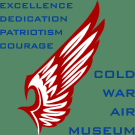 With an assembly weight in excess of 1000 kilos (more than 2200 pounds) and an installed mast height of more than 4 meters (about fourteen feet), it promised to be a demanding exercise for our crew. After lunch, the volunteers and associates not directly involved gathered to watch. Despite Phil's yawn (we had all come in early), there were some tense moments.
With an assembly weight in excess of 1000 kilos (more than 2200 pounds) and an installed mast height of more than 4 meters (about fourteen feet), it promised to be a demanding exercise for our crew. After lunch, the volunteers and associates not directly involved gathered to watch. Despite Phil's yawn (we had all come in early), there were some tense moments. The first step was rigging the assembly for the lift operation.
The first step was rigging the assembly for the lift operation.Not shown here was the substantial "discussion" that took place before everyone involved was satisfied that we would safely achieve our goal.
Thanks to that substantial preparation, the operation went smoothly once it was started.
 When the unit was first lifted, everything was checked. Then the operation continued with the unit being raised and moved into place over the top of the helicopter.
When the unit was first lifted, everything was checked. Then the operation continued with the unit being raised and moved into place over the top of the helicopter. A side panel has been removed to provide easier access to the top compartment, even so, the forklift had to be carefully operated within inches of the side of the fuselage. The driver and the crew on top of the helicopter had to shout to be heard over the noise of the forklift engine. The coordination worked well. While we had been prepared for several placement attempts, we were successful on the first try.
A side panel has been removed to provide easier access to the top compartment, even so, the forklift had to be carefully operated within inches of the side of the fuselage. The driver and the crew on top of the helicopter had to shout to be heard over the noise of the forklift engine. The coordination worked well. While we had been prepared for several placement attempts, we were successful on the first try. The transmission attaches to four mounting points on top of the fuselage. Panels surrounding the transmission and engine compartments provide substantial access for maintenance and repair.
The transmission attaches to four mounting points on top of the fuselage. Panels surrounding the transmission and engine compartments provide substantial access for maintenance and repair.The transmission and rotor components are said to be designed to withstand the impact of .50 cal projectiles.




No comments:
Post a Comment